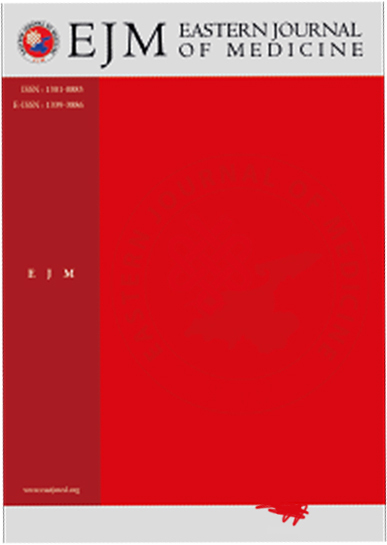Investigation of correlations between joint health, functionality, and MRI score in hemophilic arthropathy of the elbow joint: Cross-sectional study
Ayşe Merve Tat1, Sezai Özkan2, Necati Muhammed Tat1, Kamuran Karaman3, Ahmet Faik Öner31Yuzuncu Yil University, Faculty of Health Sciences, Department of Physiotheraphy and Rehabilitation2Yuzuncu Yil University, Faculty of Medicine, Department of Orthopedics and Traumatology
3Yuzuncu Yil University, Faculty of Medicine, Department of Paediatric Hematology and Oncology
INTRODUCTION: Hemophilic arthropathy (HA) of the elbow joint should be examined separately from the knee and ankle because of the anatomical and biomechanical differences of the elbow. The aim is to investigate possible correlations between age, range of motion (ROM), muscle strength, upper extremity functions, joint health and radiological findings.
METHODS: Twenty-seven joints of 20 patients aged 11-30 years with findings of HA in elbow were evaluated. International Prophylaxis Study Group Magnetic Resonance Imaging (IPSG MRI) score was used in the radiological evaluation. In physical evaluations, ROM and muscle strength were measured by goniometer and digital dynamometer, respectively. Joint health was evaluated with Hemophilia Joint Health Score-Elbow Point (HJHS-EP) and upper extremity functionality with Quick-Disability of Arm Shoulder and Hand (Q-DASH).
RESULTS: The age was strongly correlated with HJHS-EP, loss of extension and pronation ROM and moderately correlated with IPSG MRI score. HJHS-EP showed strong correlation with loss of extension. There were a moderate correlation between Q-DASH and muscle strength of the elbow. The IPSG MRI scores were not significantly correlated with physical examinations.
DISCUSSION AND CONCLUSION: The elbow joint should be evaluated both radiographically and physically and these assessments cannot be alternatives to each other. Even goniometric assessment of elbow extension alone may provide important information about joint health. Functionality can be improved by increasing muscle strength. Since the deterioration in physical and radiographic examinations with age, it is recommended to conservatively or surgically treat of the elbow joint with physiotherapy at early ages.
Manuscript Language: English














